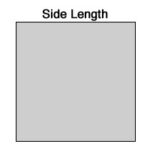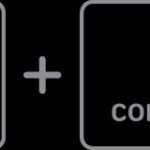Have you ever been in the middle of a recipe and stumbled upon the question, “How many tablespoons are in an ounce?” You’re definitely not alone! This is a common head-scratcher for home cooks everywhere. Whether you’re dealing with US recipes using ounces while you’re more familiar with tablespoons, or vice versa, understanding this conversion is kitchen essential.
Tablespoons and ounces are frequently used in cooking and baking, but they measure different things – volume and weight/fluid volume, respectively. Knowing how to switch between them is a simple yet crucial skill for any cook.
This guide will provide you with a comprehensive understanding of the tablespoon to ounce conversion, ensuring your recipes turn out perfectly every time, no matter the measurement units used.
For more handy kitchen conversions, you might also find our guides on How Many Pints in a Gallon and Grams to Ounces Conversion incredibly useful!
Decoding the Tablespoon
The tablespoon (tbsp or Tbsp) is a standard unit of volume widely used in cooking and baking. It’s a convenient, though not always the most precise, tool in the kitchen. Think of it as that slightly larger spoon in your cutlery drawer, bigger than a teaspoon but smaller than a soup spoon.
Here’s how a tablespoon stacks up against other measurements:
- 3 teaspoons (tsp)
- Approximately 14.8 milliliters (ml) in the US (using the Imperial system)
- 15 ml according to the metric system (a slightly rounded figure for simplicity)
- 20 ml in Australia (it’s worth noting slight variations in different regions)
Historically, the tablespoon has also served as a piece of cutlery. In medieval times, personal spoons were common, a precursor to modern flatware. Today, tablespoons are indispensable in cooking and baking, forming a key part of any measuring spoon set.
Dive deeper into other tablespoon measurements with our guide on How Many Tablespoons are in 1/4 Cup.
Understanding the Ounce
The ounce (oz) is a unit of weight or fluid volume primarily used in the United States and Britain. When we talk about ounces in recipes, we often mean fluid ounces (fl oz), which measure volume, especially for liquids. It’s important to differentiate fluid ounces from dry ounces, which measure weight and are used for dry ingredients. Remember, 1 pound is equal to 16 ounces.
You’ll commonly see ounces abbreviated as “oz” and fluid ounces as “fl oz” to avoid confusion.
The Magic Number: Tablespoons to Ounces Conversion
Ready to get down to the conversion? If you’re wondering “How Many Tbsp In An Ounce?”, the answer is straightforward:
There are 2 tablespoons in 1 fluid ounce.
This simple ratio is the key to converting between these two units. Let’s expand on this to cover common measurements:
- 1 fluid ounce = 2 tablespoons
- 2 fluid ounces = 4 tablespoons
- 4 fluid ounces = 8 tablespoons
- 6 fluid ounces = 12 tablespoons
- 8 fluid ounces = 16 tablespoons (This is also equal to 1 cup)
- 10 fluid ounces = 20 tablespoons
Quick Conversion Chart: Tablespoons to Ounces
For your convenience, here’s a handy conversion chart to quickly reference when you’re in the kitchen:
| Tablespoons | Fluid Ounces |
|---|---|
| 2 tbsp | 1 fl oz |
| 4 tbsp | 2 fl oz |
| 6 tbsp | 3 fl oz |
| 8 tbsp | 4 fl oz |
| 10 tbsp | 5 fl oz |
Expert Tips for Measuring Liquid Ingredients
Liquid ingredients, like oils, milk, and water, are frequently measured in both tablespoons and fluid ounces. While using tablespoons for liquids is convenient, it’s not always the most precise, especially in recipes that demand accuracy. For everyday cooking, however, tablespoons can be perfectly adequate.
To measure liquids accurately with a tablespoon:
- Ensure a Level Surface: Place your tablespoon on a flat, even surface. If it doesn’t balance, hold it steady.
- Pour Carefully: Gently pour the liquid into the tablespoon.
- Eye Level Check: Lower your eye level to the spoon. The liquid should reach the very top surface of the spoon, without overflowing.
For more precise liquid measurements, use a liquid measuring cup marked in fluid ounces or a kitchen scale with fluid ounce settings.
Mastering Measurement of Dry Ingredients
Dry ingredients such as flour, sugar, and spices are typically measured by volume (cups, tablespoons) or weight (grams, ounces). When considering “how many tbsp in an ounce” for dry ingredients, it’s crucial to remember we are generally still referring to a volume measurement here, even when discussing “dry ounces.”
As we’ve established, 2 tablespoons are equivalent to 1 fluid ounce, and this applies to dry ingredients when measured by volume using tablespoons.
For the most accurate measurement of dry ingredients by weight (dry ounces), a kitchen scale is recommended. Alternatively, for volume measurements, use measuring spoons or cups.
To accurately measure dry ingredients in tablespoons:
- Aeration is Key: Lightly loosen dry ingredients like flour or sugar to aerate them. Avoid packing them down.
- Spoon and Level: Use a spoon to fill the tablespoon with the ingredient, letting it mound slightly.
- Level Off: Use the back of a straight-edged utensil, like a knife or another spoon, to level off the top, removing any excess.
Accurately measuring ingredients using measuring spoons is crucial for successful cooking and baking.
Why Precision in Measurement is Key
Understanding conversions like tablespoons to ounces is more than just convenient—it’s essential for culinary success, especially in baking. Baking often requires precise measurements; even slight discrepancies can alter the outcome, leading to a cake that’s too dry, cookies that are too flat, or bread that doesn’t rise.
While slight estimations might be forgiving in some cooking scenarios, accuracy is paramount when baking and in recipes where ingredient ratios are critical to the final flavor and texture.
It’s important to note that ingredient density varies. Therefore, a tablespoon of flour will not weigh the same as a tablespoon of honey. For utmost accuracy, especially in baking, using a kitchen scale to measure by weight is often recommended. However, for most home cooking needs, understanding the tablespoon to ounce volume conversion is perfectly sufficient.
Explore more helpful measurement conversions with our articles on Quarts to Pints and Cups to Tablespoons.
Measurement Units: A Global Perspective
While tablespoons are commonly used in the United States and many other countries, their context and exact volume can vary slightly across regions.
Ounces, particularly fluid ounces, are prevalent in US and British recipes. However, many parts of the world, especially in Europe, Australia, and Africa, predominantly use grams and milliliters for both dry and liquid measurements in cooking and baking. Being aware of these differences is helpful when using recipes from diverse sources or when cooking internationally.
Frequently Asked Questions (FAQs)
How many tablespoons are in 1 dry ounce?
There are 2 tablespoons in 1 fluid ounce, which is generally considered equivalent to 1 “dry ounce” when measuring volume with spoons. For precise dry ounce measurements by weight, use a scale.
Do 3 tablespoons equal 1 oz?
No, 3 tablespoons do not equal 1 fluid ounce. There are 2 tablespoons in 1 fluid ounce. Conversely, 1 tablespoon is equal to 0.5 fluid ounces.
How many ounces are in a tablespoon of liquid?
There are 0.5 fluid ounces in 1 tablespoon of liquid. This is approximately 15 ml.
What is the difference between liquid and dry ounces?
“Liquid ounce” (fluid ounce) measures volume, primarily for liquids. “Dry ounce” technically measures weight, but in common kitchen usage, especially when converting from tablespoons, it often refers to a volume roughly equivalent to a fluid ounce. For precise measurement of dry ingredients by weight, use a kitchen scale set to ounces (weight). For liquids, fluid ounce measurements are volume-based and can be measured using liquid measuring cups or scales with fluid ounce settings.
How do you measure dry ounces?
For accurate measurement of dry ounces by weight, use a kitchen scale.
Can I use the same measuring cup for dry and liquid ingredients?
It’s best to use separate measuring cups for dry and liquid ingredients for optimal accuracy. Liquid measuring cups are designed to measure volume precisely, with markings to be read at eye level. Dry measuring cups are meant to be leveled off, ensuring consistent volume for dry ingredients.
How many tablespoons in 1.5 oz?
There are 3 tablespoons in 1.5 fluid ounces.
How much is 2 oz in tablespoons?
2 fluid ounces is equal to 4 tablespoons.
How many ounces in a tablespoon of butter?
There are 0.5 fluid ounces in 1 tablespoon of butter.
How many ounces in a tablespoon of peanut butter?
There are 0.5 fluid ounces in 1 tablespoon of peanut butter.
How many ounces in a tablespoon of sugar?
There are 0.5 fluid ounces in 1 tablespoon of sugar.
How many ounces in a tablespoon of water?
There are 0.5 fluid ounces in 1 tablespoon of water.
Essential Kitchen Tools for Accurate Measuring
Measuring Spoons: A set of measuring spoons is indispensable for accurately measuring tablespoons and teaspoons.
Liquid Measuring Pitcher: A measuring pitcher with clear markings for ounces, cups, and milliliters is perfect for liquid ingredients.
We hope this guide has clarified the relationship between tablespoons and ounces and empowered you to confidently navigate recipes using these measurements. Happy cooking and baking!
If you found this guide helpful, please rate and comment below! For more culinary inspiration, follow us on Facebook, Instagram, and Pinterest. For free weekly meal plans and more resources, subscribe to our newsletter!

